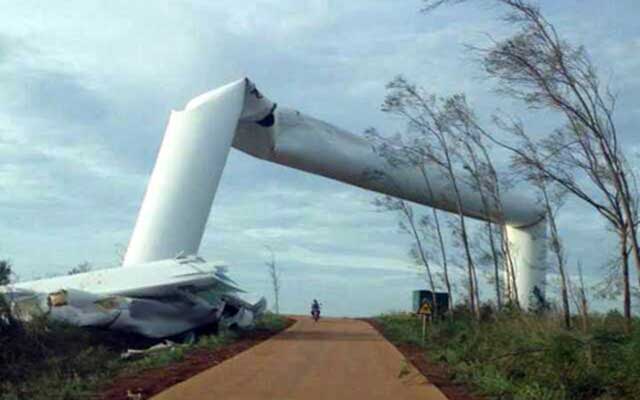From STT
Running around-the-clock, whatever the weather, with no need for batteries and no need for back up, nuclear power is the perfect foil for those fretting about carbon dioxide gas emissions. Because it generates power reliably and does not generate CO2 in the process, the wind and sun cult sink into fits of rage at the mere mention of nuclear power.
The propagandists have been spinning the line that nuclear power is expensive, using fictional assumptions and ludicrous projections based on overblown output figures for wind and solar, wild claims about the longevity of wind turbines and solar panels, and flat out lies about the cost of nuclear power.
As Tony Grey outlines below, the number and range of countries dialling up nuclear power demonstrates that it’s game over for intermittent wind and solar.
Tiny Estonia has a small economy but is confident it can afford nuclear
The Australian
Tony Grey
11 June 2024
Our longstanding energy supplies from coal and gas are under attack from environmentalists and governments, and being closed or under threat of closure. Pragmatists will be relieved Australia’s biggest coal-fired power station, Eraring in NSW, is to stay open “at least” until 2027, to allow the transition to emissions-free energy to occur without destroying the economy.
In the meantime, the country is increasingly reliant on fickle wind and solar to power the economy without the plausible alternative emissions-free firming agent – nuclear – which Energy Minister Chris Bowen mistakenly claims is too expensive. He relies on the CSIRO’s recent GenCost report, which grossly exaggerates the costs of nuclear and the time needed to build the small nuclear reactors ideally suited to Australia. The report is more in accordance with Bowen’s prejudices than the judgment of international nuclear experts.
What is happening in the real world as jurisdictions such as Ontario, Canada, strike contracts to build SMRs (in this case a suite of 300MW units) at costs far below GenCost’s guesses supports the view of columnist Judith Sloan on this page last month that the CSIRO’s reputation has been “markedly sullied” by the “glaring errors” in its latest GenCost report.
Rather than the stab-in-the dark forecast by GenCost that SMRs here would take 20 years to bring into production, Tony Irwin, a nuclear engineer who has run a nuclear plant in the UK, estimates it to be about 10 years, the length of time required for offshore wind farms.
According to the World Nuclear Association, about 30 countries are considering, planning or starting nuclear installations, and a further 20 express an interest. These are countries whose economies range from the sophisticated to the developing, in Europe, the Middle East, Africa, Central and South America, and Asia. Countries are pressing ahead with nuclear because it represents the best source of emissions-free baseload electricity.
In his article in The Australian last week, Bowen cast doubt on whether Italy, Saudi Arabia and Indonesia will adopt nuclear power. In fact, Italy’s parliament has passed a resolution urging the government to consider nuclear, and its Energy Minister is promoting it. Also, the Saudi Energy Minister plans to build a nuclear project of 2.8GW with a goal of increasing capacity later, while Indonesia has plans to build 8GW of nuclear capacity by 2035, buttressed by 76 per cent public support.
The spurious assertions on time and cost of nuclear being parroted by the CSIRO and Bowen are in stark contrast to what plucky little Baltic state Estonia is doing. With a population of 1.4 million and a GDP just one 44th of Australia’s, Estonia is actively considering the merits of nuclear power as a means to escape its dependence on fossil fuels.
Like Australia, it is seeking to reach net-zero emissions by 2050, but to accomplish this it is looking to nuclear to diversify its energy mix by 2035 when it plans to discontinue its use of domestic oil shale. In a report to the government, a nuclear working group concluded that adopting nuclear power in Estonia is feasible. Fifty-five members of its parliament have proposed a resolution calling for preparations for nuclear power generation, including creation of a necessary legislative framework, establishment of a nuclear regulatory institution and development of “sectoral competence”.
It would be highly unlikely for Estonia to take this approach unless the reasons for adopting nuclear were accepted as compelling. Estonia’s planners would be aware of the fact that in Ontario, where 58 per cent of power is nuclear-generated, electricity costs are equivalent to US12 cents/kWh as opposed to US22 cents in the EU. Ontario’s costs are about half what NSW consumers pay for their electricity.
A majority of Australians favours nuclear power – two-thirds think the ban on it should be lifted. Once the banning legislation is repealed, an approach along the lines of Estonia’s would be a sensible way for Australia to proceed. It provides for progress towards nuclear but allows a change of mind if the facts warrant it. It is rational and information-based, as opposed to judgment-distorting ideology, which is so blinding our government.
The Australian










